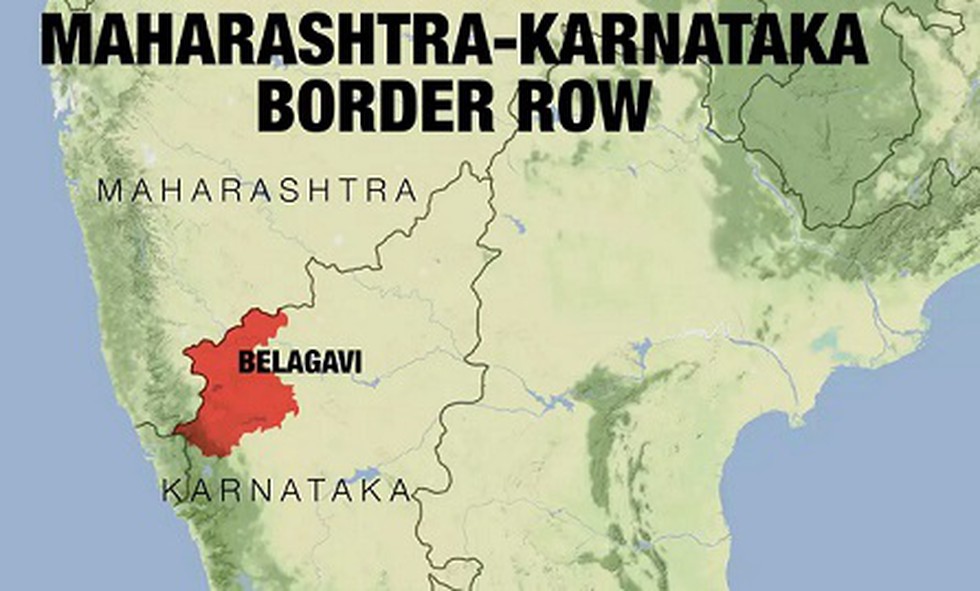BELAGAVI BORDER DISPUTE
BELAGAVI BORDER DISPUTE

An inter-state dispute between Karnataka and Maharashtra dating back to the period of Independence and the reorganisation of states on linguistic lines in 1956 has reared its head again in the Belagavi region of Karnataka.
IN THE HISTORY
- Belagavi is a part of Karnataka and was earlier part of the British India’s Bombay Presidency.
- The Bombay Presidency encompassed present day Gujarat, Maharashtra as well as certain areas of Karnataka.
- According to the 1881 census, majority of people in Belgaum spoke Kannada and the rest were Marathi-speakers. This led it to becoming part of Karnataka despite opposition from Maharashtra.
- After India became independent in 1947, the Belagavi district of the erstwhile Bombay Presidency became a part of Bombay State. In 1948, Belagavi Municipality, dominated by Marathi-speaking politicians, asked the Indian Constituent Assembly, and the Boundary Commission to include the Belgaum Municipal District in the proposed Samyukta Maharashtra state for Marathi speakers.
- In 1956, in accordance with the established policy of bifurcation on a linguistic majority basis, the Belagavi district was incorporated into the newly formed Mysore state (now Karnataka) with the passage of the States Reorganization Act, and adjoining areas with a majority of Marathi-speaking citizens were included in the newly formed Maharashtra state.
- The Act, which re-organised India’s states along linguistic and administrative lines, included Belagavi in the Kannada-majority Karnataka. The district had most of the Marathi-speaking population, hence the ‘dispute’
- The Maharashtra Ekikaran Samiti – a socio political party representing the interests of the Marathi-speaking population in the Belagavi region with the single-point agenda of unifying Marathi-speaking villages in Belagavi with Maharashtra (in opposition to the reorganisation of states in 1956) – is pitted against pro-Kannada groups in Karnataka who believe Belagavi is now a Kannada-speaking district. The MES came into existence in 1948 with the sole aim of pushing for integration of Belgaum with Maharashtra during the reorganization of states.
- Since 2012, when Karnataka legislature sessions began being organised in the Belagavi region of Karnataka, the MES has organised a protest rally called the Maha Melava rally outside the Suvarna Soudha – the venue of the legislature meeting to press for unification of Belagavi with Maharashtra. Incidentally, the Suvarna Soudha in Belagavi, a replica of the Vidhana Soudha in Bengaluru, was built at a cost of Rs 400 crore by the state of Karnataka to integrate the region into the state and quell the challenge of pro-Marathi groups for integration with Maharashtra.
MAHAJAN COMMITTEE REPORT
Following a memorandum from the Maharashtra government on 23 June 1957, the Government of India constituted Mahajan Committee on 5 June 1960 to look into the case.
The four member Committee consisted of two representatives from the Maharashtra Government, and two from the Mysore state Government.
The following are the summary of Mahajan committee report.
- Belgaum to continue in Karnataka
- Around 247 villages/places including Jatta, Akkalakote, Sholapur to be part of Karnataka
- Around 264 villages/places including Nandagad, Nippani Khanapur to be part of Maharashtra
- Kasaragod (of Kerala) to be part of Karnataka
The Maharashtra and Kerala government refuted the recommendations of the report and demanded another review of the issue. Maharashtra government termed the findings of the reports as biased and self-contradictory because the “formula” applied for Kasaragod was not applied for Belgaum.
Maharashtra Government insisted that the report is against the “wish of people” of Belgaum. Kerala, on the other hand, refused to hand over Kasaragod to Karnataka. The Karnataka government, continued to press for the implementation of the report or maintaining status quo.

